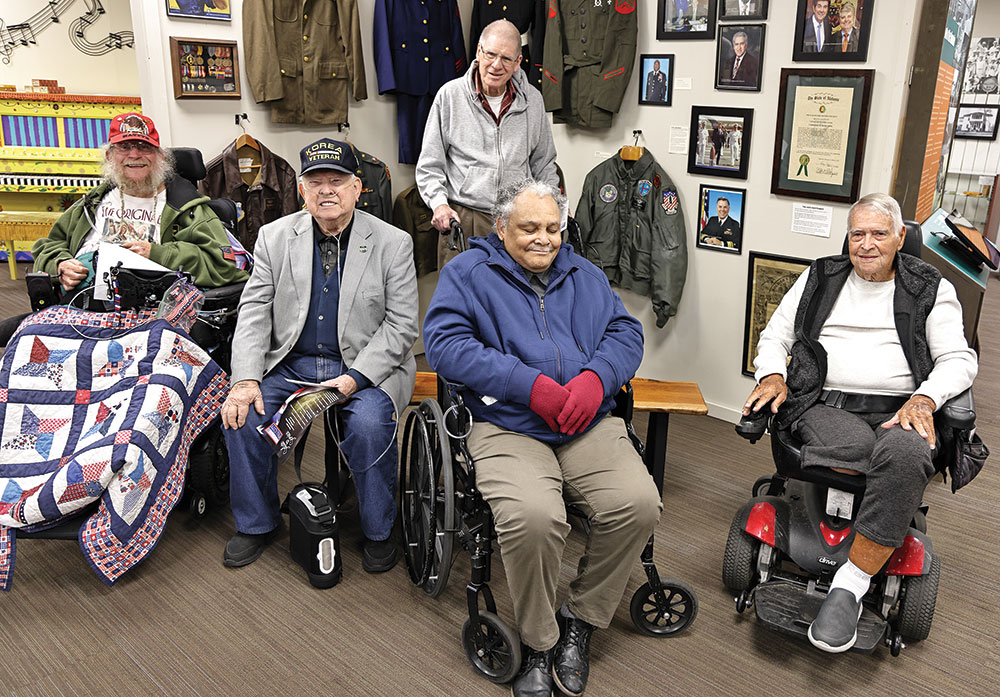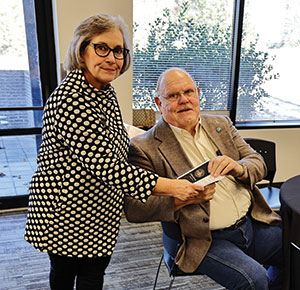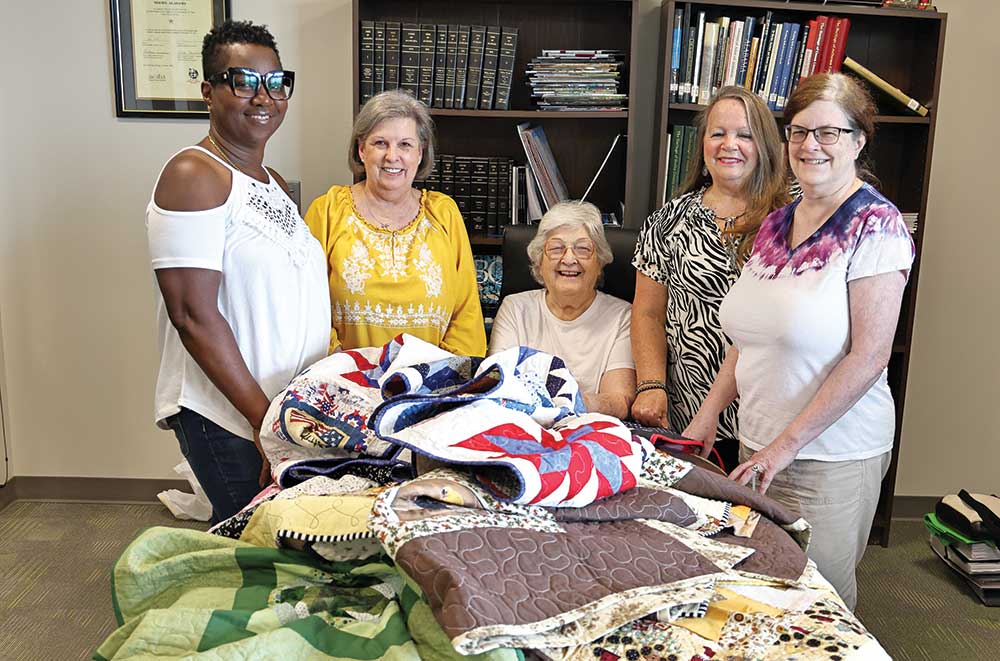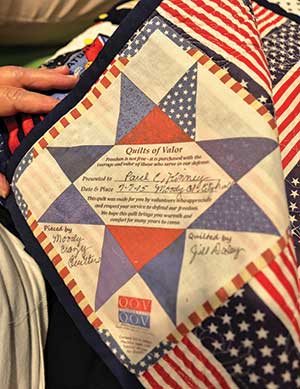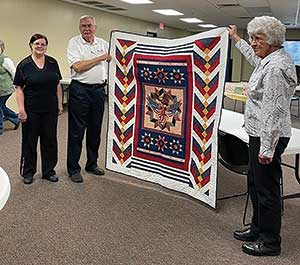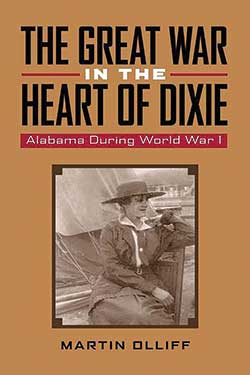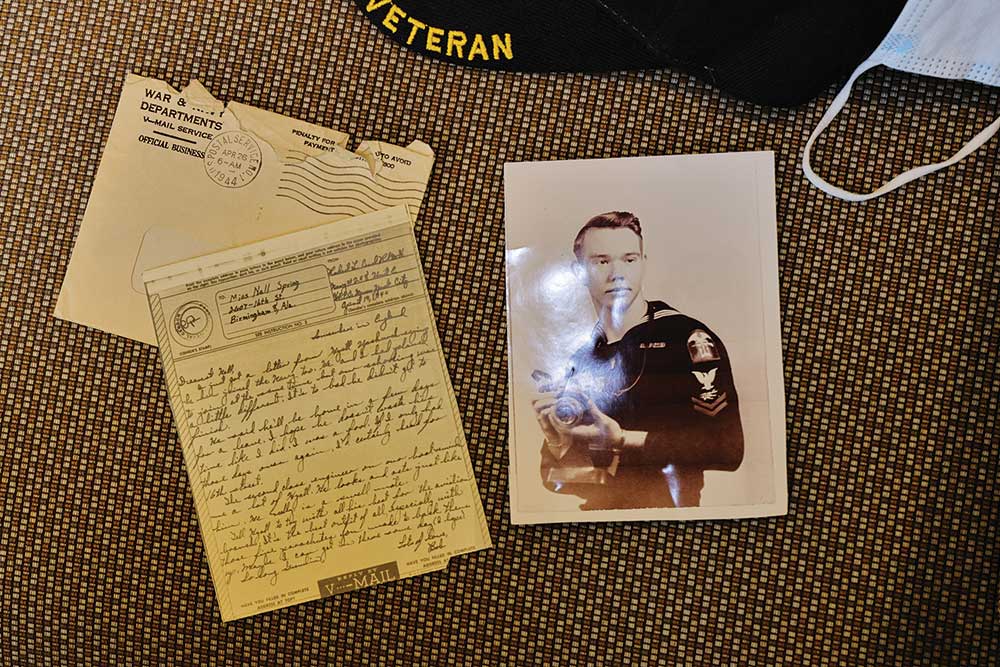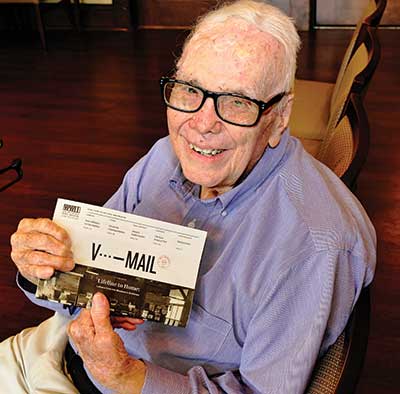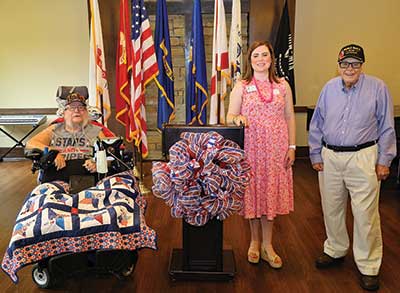Museum of Pell City’s special focus on veterans
Story and photos by
Carol Pappas
In its first community outreach program since opening in March, Museum of Pell City presented Salute to Service Nov. 2, hosting a crowd of over 80 veterans and community and governmental leaders.
The event included lunch, speaker, a state senate resolution, a special presentation to veterans, a new military service exhibit and premier of a short film produced by the museum.
“We chose this as our very first community outreach program for a reason – veterans form the very foundation of all of our communities across our country,” Museum President Carol Pappas said in opening remarks. “Their history is what our history is built upon, and we truly thank them for their service.”
Salute to Service hosted a group of veterans and staff from Col. Robert L. Howard State Veterans Home as special guests, and veterans throughout the audience were recognized for their service. The museum presented each with a special memento – a commemorative challenge coin thanking them for their service.
The museum presented its coin with a specially designed card saying: “Historically, military commanders presented challenge coins to members of their units in recognition of special achievements. Today, we respectfully present it to you for the ultimate achievement – your service and sacrifice in defense of our country, our freedoms and our way of life.”
Museum First Vice President Deanna Lawley directed the day’s program, noting her own roots in a military family. “Veterans are men and women who have put others before self to guarantee the security of our community and country. The sacrifices were also made by your families who often had an empty chair at the head of the table. I know this because for the first 15 years of my life, I watched my mother move four daughters from the dust blown plains of Ft. Sill Field Artillery School, Oklahoma, to Newnan, Georgia, where family took us in as Daddy was deployed to join Patton’s 3rd Army.”
She detailed the family’s moves during her father’s service after World War II – Panama Canal and Boston. Then, he was called to Korea. When the war ended, she and her sisters thought he would be home soon, but duty called again. “He remained to negotiate prisoner of war exchanges and saw the harsh sacrifices made by those who had been captured.”
He was home for a time, then orders sent him with family in tow to Verona, Italy, where he’d work to establish SETAF relationships and find a home for us on the Italian economy,” she said, noting that she went to school in a converted shoe factory with a potbelly stove for heat.
“Military families learned to be resilient and independent. I don’t know the length of service each of you gave, but I know it involved many sacrifices from you and your loved ones. My father will always be my hero, Col. Neil Nolen of Alexander City, Alabama, just as you surely are to your family. Freedom is never free, and we thank each veteran here today for all you gave.”
Salute to Service Program
“This event was made possible through the efforts of so many,” Pappas said, noting the work of the board of directors, the museum docents and volunteers. Union State Bank sponsored the lunch. Pell City Flower and Gifts donated centerpieces for each table. Metro Bank, through a five-year financial commitment, is making special programs like this and traveling exhibits possible.
“Col. Robert L. Howard Veterans Home and Director Hiliary Hardwick were instrumental in the success of this event, loaning many of the artifacts, uniforms and photographs we have on display, greatly expanding the exhibit we were able to create. Jeremy Gossett, who designed the museum, created our new exhibit, which triples the size of the military portion of the museum’s “For Their Service” displays.
“Jeremy’s talent in bringing this together in such a special way shows the pride in which we all take in saluting our veterans and their sacrifice,” Pappas said.
“We thank Dr. Marty Olliff, professor, author and historian for his presentation on Alabama’s role in World War I,” she added. “His talk reminds us of how our own story fits into the bigger picture of Alabama and U.S. history.”
The living history studio where oral histories are videoed was turned into a screening room for the event and throughout the rest of the year, where they are showing the museum produced-film, War and Remembrance. The video features local veterans and others from the state veterans home, who represent World War II, Korea and Vietnam, who share their own experiences of conflict.
“This is a powerfully moving video, helping us better understand the sacrifices of war,” Pappas said. The video is the first in a series of such videos made possible through grants from Alabama Humanities Alliance and the Greater Pell City Rotary Community Foundation.
She commended videographers Ed Tyler and David Smith, volunteers who filmed these interviews, and Larry Krantz, who put it all together as video editor. “They did a tremendous job in bringing the battlefield home to us so that we have an even deeper appreciation for our veterans.”
State Sen. Lance Bell presented a resolution proclaiming the month of November as Veterans Month at the Museum, underscoring that “Veterans have earned and deserve such recognition and deep gratitude for their service and sacrifice.”
The exhibit and film are featured through the end of the year. The museum is open Thursdays and Fridays, 10 a.m. to 4 p.m. and Saturdays, 10 a.m. to 2 p.m. but will be closed for holidays Dec. 22 and 23.
Any veteran visiting will receive the special challenge coin and card as a special gift from the museum. Admission is always free.














